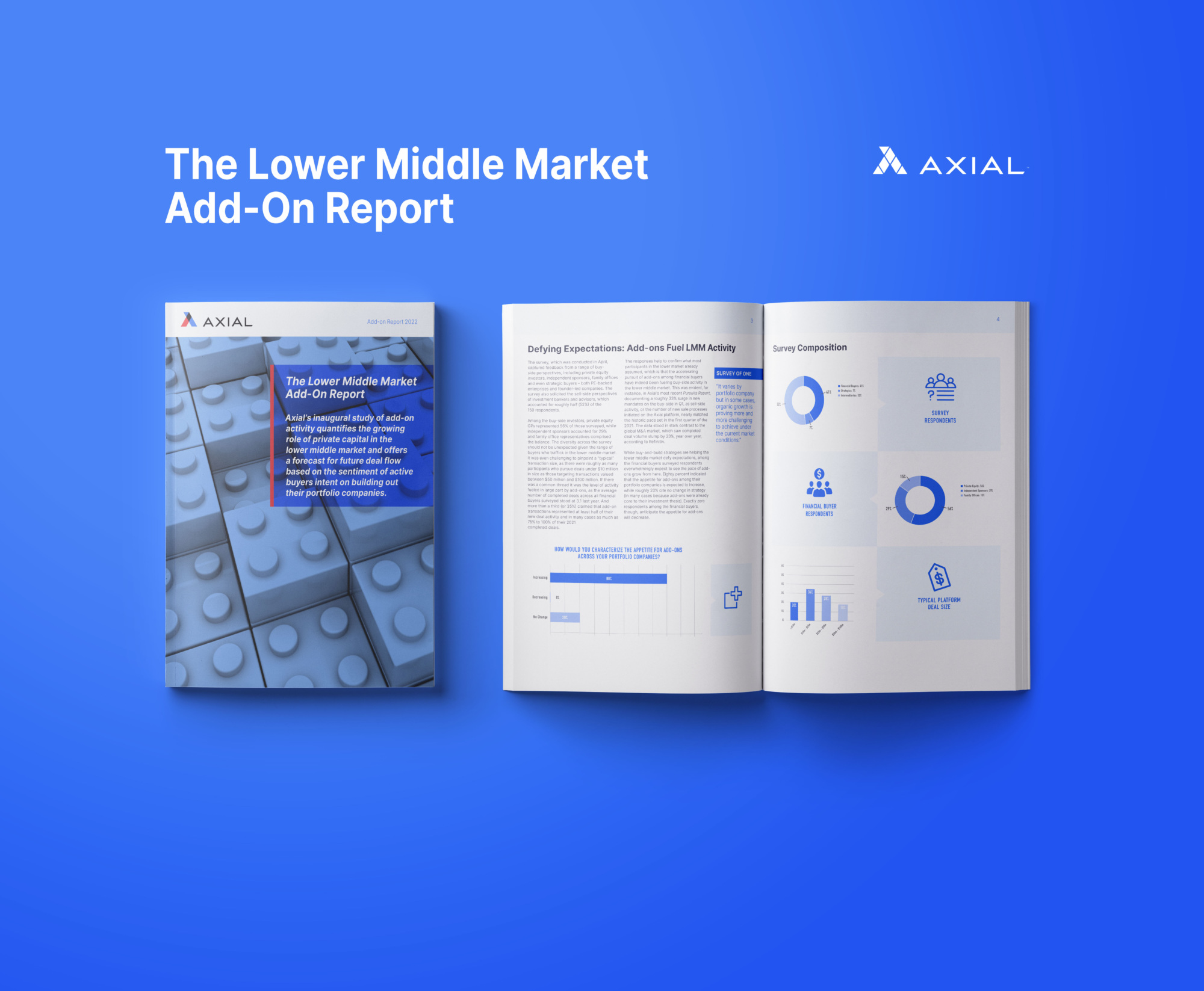
Lower Middle Market Too Hot to Touch
via GIPHY The M&A market as a whole remains white hot and the lower middle market is no exception. Sellers…
A survey of 150 deal professionals across the Axial network documents the extent to which financial sponsors have descended upon the lower middle market to power add-on strategies. Regardless of how the economic picture unfolds, the majority only anticipate add-on activity will accelerate from here.
After the first quarter, when lower middle market deal flow seemed to hold steady as the rest of the M&A market slumped, several hypotheses were floated to help explain the resiliency of the LMM landscape. It is an area, for instance, that’s less exposed to vacillations in the capital markets. Another factor, most assumed, was that operators in the lower middle market were somewhat insulated from global threats, such as the fallout from the war in Ukraine. Another possibility, one that seemed logical but was harder to prove, was that the propensity of add-on activity in the lower middle market provided a stabilizing force. It could even be argued that against an uncertain economic backdrop, in which organic growth becomes hard to find, growth through acquisitions will become that much more important to drive private returns. Again, these are good theories, but difficult to prove, especially since lower middle market investors tend to operate off the radar of the larger PE universe.
Difficult to prove… but not impossible. To help contextualize the extent to which add-on activity is fueling LMM deal flow, Axial went to the source through a survey of buy- and sell-side deal professionals, who not only helped to dimensionalize the role of add-on activity in the market, but also offered thoughts and forecasts around how economic shifts and potential market turbulence might influence this activity in the year ahead.
The results of the survey, which generated 150 responses, confirmed the lower middle market has indeed become a beneficiary as sponsors of all sizes turn to this fertile pool of assets to source their add-on, tuck-in and bolt-on activity. In fact, the consensus among the financial investors surveyed was that the pace of add-on transactions would either accelerate (80%) or hold steady (20%) over the next year.
In addition to other findings, the survey also delved into the objectives of investors pursuing add-on activity. Growth, obviously, is a priority, but the findings to a certain degree bucked the conventional wisdom around consolidation activity. The respondents also identified the biggest challenges standing in the way of their add-on ambitions. Post-merger integration, despite what the consultants would have you believe, was not the biggest issue or threat faced by the architects of private equity’s rollups. And while it’s impossible to know what the future holds, in the event the economic picture gets uglier, the majority of those surveyed believe add-on activity will outperform the traditional M&A markets.
The debut Lower Middle Market Add-On Report also includes additional color and commentary from deal professionals participating in the survey. Future reports, meanwhile, will continue to track sentiment but also provide a longitudinal reading that documents how buyer intent changes from year to year.
While the lower middle market has always been one of the more dynamic segments of the broader M&A universe, the growth of add-on activity represents yet another factor that reinforces the strength and vibrancy of this overlooked corner of the market. We hope you enjoy the report!
